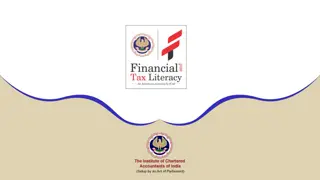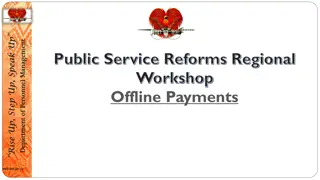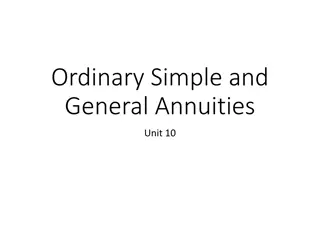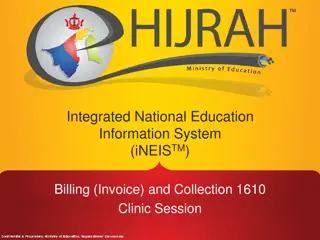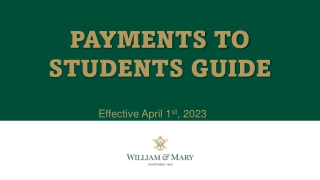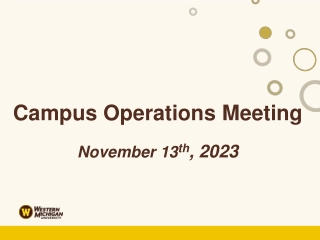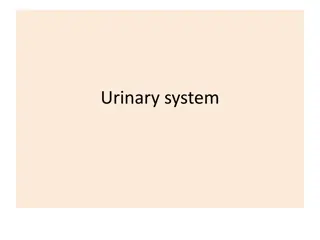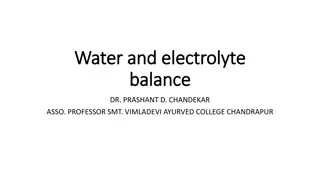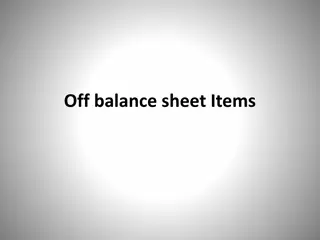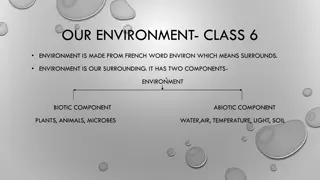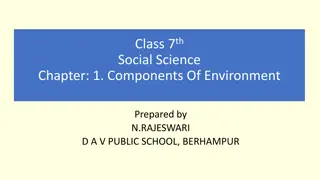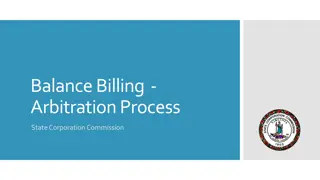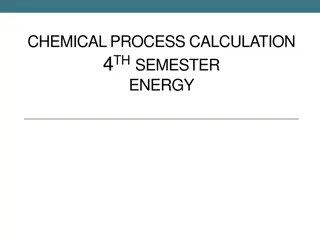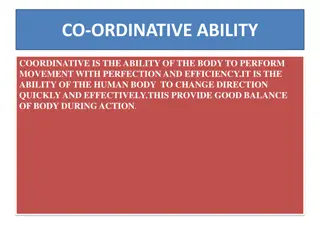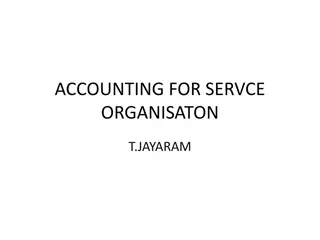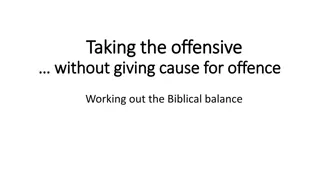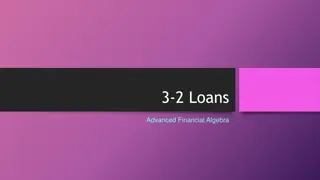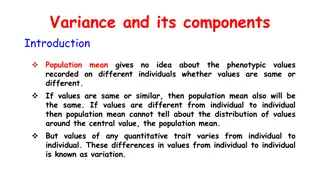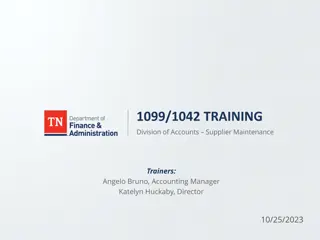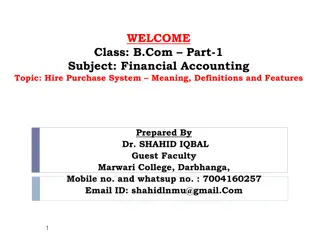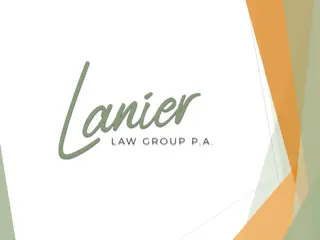Understanding Balance of Payments: Components and Significance
Balance of Payments (BOP) is a comprehensive account of a country's economic transactions with other nations in a given period. It includes receipts and payments for goods, services, assets, and more. BOP consists of the current account, capital account, and official reserve account. The current account covers trade in goods and services, income transfers, and unilateral transfers. Components of the current account include the visible account (merchandise trade) and invisibles account (services trade). Investment income like interest, profit, and dividends also contributes to the BOP. Monitoring BOP helps assess a country's economic health and financial stability.
Download Presentation

Please find below an Image/Link to download the presentation.
The content on the website is provided AS IS for your information and personal use only. It may not be sold, licensed, or shared on other websites without obtaining consent from the author. Download presentation by click this link. If you encounter any issues during the download, it is possible that the publisher has removed the file from their server.
E N D
Presentation Transcript
BALANCE OF PAYMENTS I. Meaning of Balance of Payments (BOP): The balance of payments is a consolidated account of the receipts and payments from and to other countries arising out of all economic transactions during the course of a year. In the words of C. B. Kindleberger; The balance of payments of a country is a systematic record of all economic transactions between the residents of the reporting and the residents of the foreign countries during a given period of time.
Here, by residents we mean individuals, firms and government. By all economic transactions we mean transac- tions of both visible goods (merchandise) and invisible goods (services), assets, gifts, etc. In other words, BOP shows how money is spent abroad (i.e. payments) and how money is received domestically (i.e., receipts). Thus, a BOP account records all payments and receipts arising out of all economic transactions.
Components of BOP Accounts: According to the broad nature of the transactions concerned, the BOP of a country is divided into two main parts: (i) the current account, and the (ii) capital account. The other part is official reserve account. (i) The Current account: The current account of BOP includes all transaction arising from trade in currently produced goods and services, from income accruing to capital by one country and invested in another and from unilateral transfers, both private and official. The current account is usually divided in three subdivisions:
The first of these is called visible account or merchandise account or trade in goods account. This account records imports and exports of physical goods. The balance of visible exports and visible imports is called balance of visible trade or balance of merchandise trade [i.e., items 1(a), and 2(b) of Table 5.1]. The second part of the account is called the invisibles account since it records all exports and imports of services. The balance of these transactions is called balance of invisible trade. As these transactions are not recorded in the customs office unlike merchandise trade we call them invisible items.
It includes freights and fares of ships and planes, insurance and banking charges, foreign tours and education abroad, expenditures on foreign embassies, transactions out of interest and dividends on foreigners investment, and so on. Items 2(a) and 2(b) comprise services balance or balance of invisible trade. There is another flow in current account that consists of two items [3(a) and 3(b)]. Investment income consists of interest, profit and dividends on bonus and credits.
For eg Interest earned by a U.S. resident from the TELCO share is one kind of investment income that represents a debit item here. There may be similar money inflow (i.e., credit item). Unrequited transfers include grants, gifts, pension, etc. These items are such that no reverse flow occurs. Or these are the items against which no quid pro quo is demanded. Residents of a country receive these cost-free. Thus unilateral transfers are one-way transactions. In other words, these items do not involve give and take unlike other items in the BOP account.
The difference between merchandise trade and invisible trade (i.e., items 1 and 2) is known as balance of trade. (ii) The Capital account: The capital account shows transactions relating to the inter- national movement of ownership of financial assets. It refers to cross-border movements in foreign assets like shares, property or direct acquisitions of companies bank loans, gov- ernments securities, etc. In other words, capital account records export and import of capital from and to foreign countries.
The capital account is divided into two main subdivisions one is the short term and another is the long term movements of capital. A short term capital is one which matures in one year or less, such as bank accounts. A long term capital is one whose maturity period is longer than a year, such as long term bonds or physical capital. Long term capital account is, again of two categories: direct investment and portfolio investment. Direct investment refers to expenditure on fixed capital formation, while portfolio investment refers to the acquisition of financial assets like bonds, shares, etc.
On the other hand, portfolio investment refers to changes in the holding of shares and bonds. Such investment is portfolio capital and the ownership of paper assets like shares does not ensure legal control over the firms. (iii) Statistical discrepancy errors and omissions: The sum of A and B (Table 5.1) is called the basic balance. Since BOP always balances in theory, all debits must be offset by all credits and vice versa. In practice, rarely it happens particularly because statistics are incomplete as well as imperfect. That is why errors and omissions are considered so that BOP accounts are kept in balance (Item C).
(iv) The official reserve account: The total of A, B, C and D comprises the overall balance. The category of official reserve account covers the net amount of transactions by government. This account covers purchases and sales of reserve assets (such as gold, convertible foreign exchange and special drawing rights) by the central monetary authority. Thus Current account balance + Capital account balance + Reserve balance = Balance of Payments
(X M) + (CI CO) + FOREX = BOP X is exports, M is imports, CI is capital inflows, CO is capital outflows, FOREX is foreign exchange reserve balance.
The Equilibrium and Disequilibrium in the Balance of Payments! When we add up all the demand for foreign, currency and all the sources from which it comes, these two amounts are necessarily equal and thus the overall account of the balance of payments necessarily balance or must always be in equilibrium. The Balance of payments is balanced because it does not include the accommodating items such as borrowing from the IMF, use of SDRs, drawing from the reserves of foreign currencies held by the Central Bank, etc.
When excluding these accommodating items there is neither deficit nor surplus in the overall balance of payments, it is said to be in equilib- rium. When in this sense, there is either deficit or surplus, the balance of payments is said to be in disequilibrium. The deficit in balance of payments can be financed by drawings from the IMF, use of SDRs, drawings from the reserves of foreign currencies and loan and aid received from abroad. For example in 2001-02, we added to our foreign exchange reserves to the tune of 11757 million US dollars.
Basic Balance of Payments, Autonomous Items and Accommodating Items: The concept of basic balance is based upon the idea of autonomous items in the balance of payments. The autonomous items in the balance of payments are those items which cannot be influenced or changed so easily or quickly by the Government and they are determined by some long-term factors. In this concept of basic balance, besides the items in the current account, the long-term capital movements both on
private or Government account contained in the capital- account balance of payments are regarded as autonomous. On the other hand, in the capital account short-term capital movements such as borrowing from IMF or Central Banks of other countries, drawings from SDR, change in foreign exchange reserves are transitory and of accommodating nature and are therefore excluded from the concept of basic balance or of equilibrium. The recourse has to be made to these accommodating items (also called compensatory items) so as to ensure equality
between payments and receipts of foreign exchange. Changes in the compensatory items are made so as to offset the surplus or deficit in the autonomous items. Thus, when autonomous movements cancel out over some appropriate time period and there is no need for compensatory movements, the balance of payments is in equilibrium} Note that the equilibrium is a state of balance which can be sustained without intervention by the Government.
The concept of balance of payments in the sense of basic balance can be represented by the following equation: (X-M) + LTC = 0 Where X stands for exports including invisible items. M stands for imports including invisible items. LTC stands for long-term capital movements. If (X- M) is positive (i.e., X > M), then for balance of payments to be in equilibrium, LTC will be negative and equal to (X- M). This implies that there will be net capital outflow.
On the other hand, if M > X, then for the balance of payments to be in equilibrium LTC must be positive (that is, there will be net capital inflow to offset the deficit in the current account). When the balance of payments of a country is in equilibrium, the demand for the domestic currency is equal to its supply. The demand and supply situation is thus neither favourable nor unfavourable. If the balance of payments moves against a country, adjustments must be made by encouraging exports of goods, services or other forms of exports, or by discouraging imports
of all kinds. No country can have a permanently unfavourable balance of payments. Total liabilities and total assets of nations, as of individuals, must balance in the long run. This does not mean that the balance of payments of a country should be in equilibrium individually with every other country with which she has trade relations. This is not necessary, nor is it the case in the real world. Trade relations are multilateral. India, for instance, may have balance of payments deficit with the United States and surplus with the United Kingdom and/or other countries, but each country, in the long run, cannot
receive more value than she has exported to other countries taken together. Equilibrium in the balance of payments, therefore, is a sign of the soundness of a country s economy. But disequilibrium may arise either for short or for long periods. A continued disequilibrium indicates that the country is heading towards economic and financial bankruptcy. Every country, therefore, must try to maintain balance of payments in equilibrium.
Economical Distinction between Autonomous and Accommodating Items in BOP Account! The basic difference between the two is that whereas deficit or surplus in BOP occurs due to autonomous items, the accommodating items are taken to cover deficit (or surplus) in autonomous transactions. (a) Autonomous items in BOP: These refer to international economic transactions that take place due to some economic motives like earning income and profit maximisation. They have nothing to do with foreign exchange payments.
Since such transactions are independent of the state of country s balance of payment, i.e., irrespective of whether BOP is favourable or unfavourable, they are, therefore, called autonomous items. These items are generally called above the line items in BOP . it is autonomous transactions which make deficit or surplus in BOP. BOP is in deficit if the autonomous receipts are less than autonomous payments. BOP is in surplus if the autonomous receipts are greater than autonomous pa3anents. In other words, deficit or surplus in BOP depends upon the balance of autonomous items.
Deficit in BOP account: When during the year total inflows of foreign exchange on account of autonomous transactions are less than total outflows on account of such transactions, there is deficit in BOP. (b) Accommodating items in BOP: These refer to transactions that take place to cover deficit (or surplus) arising from autonomous transactions. These items are also called below the line items . Because of government financing, official settlements are seen as accommodating items to keep the BOP identity.
To meet deficit, govt. may borrow from abroad or make withdrawals from foreign exchange reserves. The official settlement approach is based on the assumption that monetary authority is the ultimate financier of any deficit in BOP or the ultimate recipient of any surplus.




